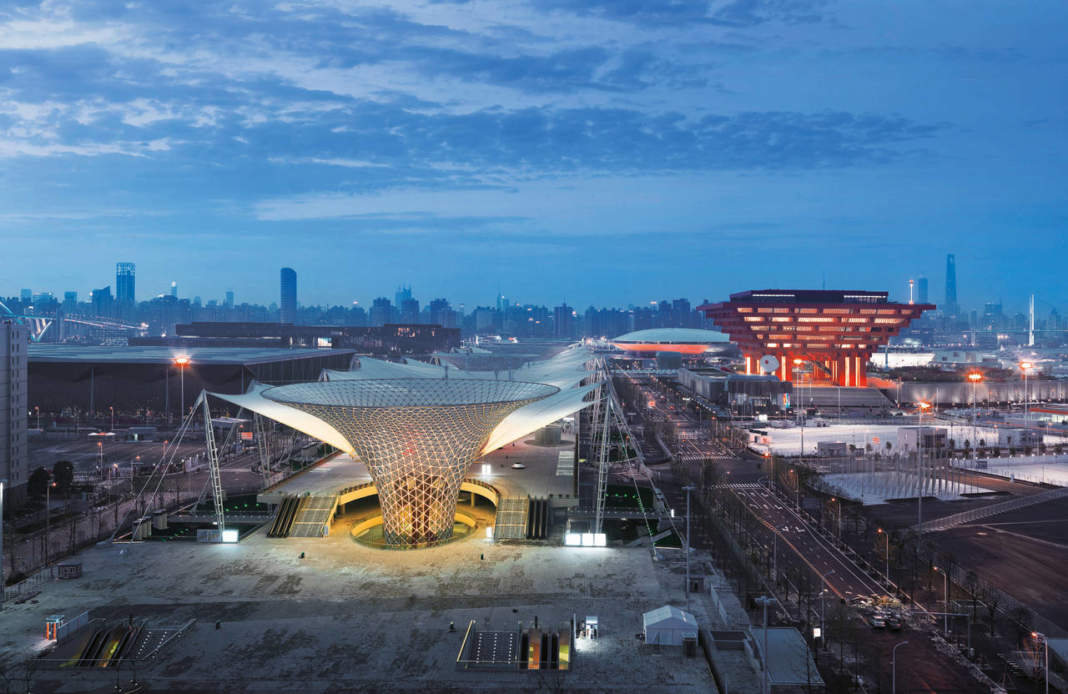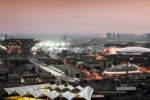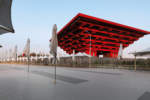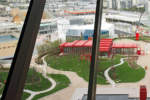The Theme of Expo 2010 Shanghai and its Significance
Summary:
The key value of the theme of Expo 2010 is the urban sustainability, to explore the global urbanization in urban century in order to meet the global challenge. World Expo is an important event of urbanization, its history is also the history of urbanization. Every World Expo is a continuous deduction of the theme on city, which has promoted the urban regeneration and sustainable development, introducing a course of re-urbanization. The selection of the site of Expo 2010 has demonstrate the strategy of sustainability, its radiation effect and after-use of the Expo site will affect the urban sustainability profoundly.
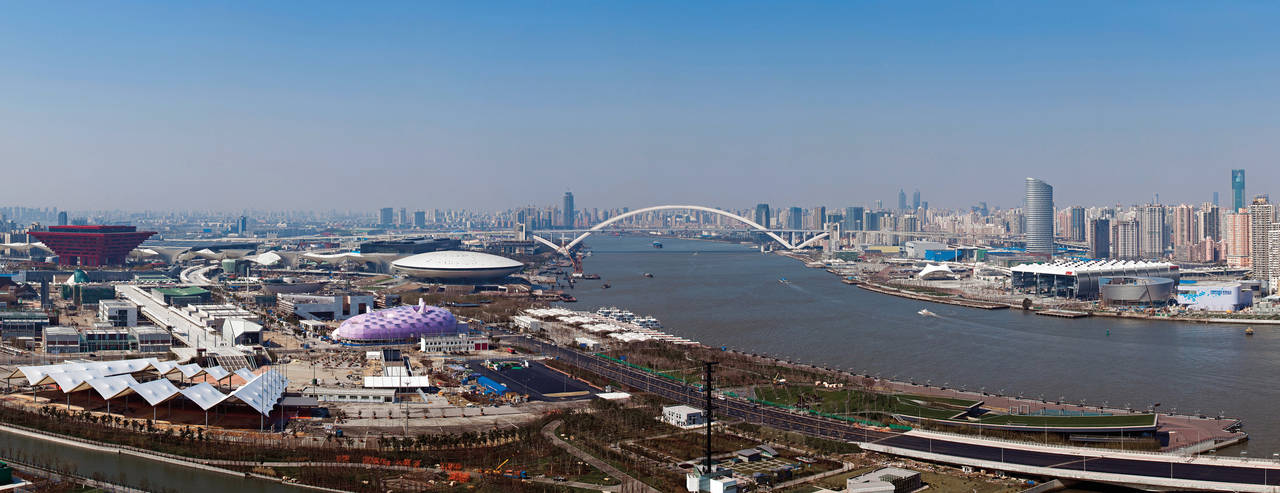
China‘s presence in the world expo can be traced back as early as in 1851 and 1862, the two “Great Exhibitions of Works of Industry of All Nations“ in London. Since then almost every world expo has witnessed the participation of China and various awards were won by Chinese products. In his political novel “The Future of New China“ the Chinese scholar Liang Qichao envisioned a Shanghai World Expo to be held 60 years later in 1962. In 1910, a Chinese writer from Shanghai named Lu Shi‘e also dreamed of a World Expo to be held in Putong, Shanghai in 100 years. At the beginning of the 20th century, quite a number of Chinese intellectuals had the idea of holding a World Expo in China, and they almost unanimously believed that the ideal place should be Shanghai. Chinese people tend to relate World Expo with new era, new life and modern cities, and their dreams will come true in 2010. World Expo represents the progress of human beings by extracting the essence of the society and the people‘s ideas, having great ideas being communicated and carried forward. The Expo is a great experiment of mankind. In review of the various themes of previous world fairs, it is obvious that almost all of them are related with the key issues and major items people then focused on. The showcase of the state of the arts and exploration into the future serve well as the manifestation of the contemporary ideas and the related values. Besides, World Expo is also an ideal place for participating countries and organizations to unlash their imagination and creativity, which, although culminated in their uniqueness, possess important values in universality.
World Expo gathers people from all around the world to look into the future. Japanese architect Kenzo Tange, who made the master plan and pavilion design for 1970 Expo in Osaka, believed that “modern expositions should have the primary objective of representing the wisdom and culture of human beings by gathering people from all over the world and facilitating their face to face exchange of ideas and feelings.“ World Expos inspire human progress, promote cultural infusion, and create spaces and platforms for communication.
The 21st century is the century for cities, and the theme of Shanghai World Expo 2010 is “Better City, Better Life“, with its core value being the sustainable development of cities. The aim is to promote the global sustainable development of cities and create better and more beautiful ones by focusing on cities, the relationship between cities and the nature, and people‘s life, as well as via the exploration into the ideas of future cities and future life, and the presentation, display, discussion and communication of the theme. One of the key missions of this Expo would be the solution of how to construct harmonious city ecology. Building a city with harmony between natural ecology and social ecology in order to have a life of quality is not only the priority issue to be considered by developing countries, but also a problem which has to be solved by developed countries. By building a glorious world of the future both ideally and in reality, we could probe the global problem of urbanization in an era of cities, addressing the big challenges in front of the whole world. Cities can not make life better, but sustainablly developed cities do. By that we are refering to cities with reasonable structures, comprehensive functions, diversified cultures, comfortable conditions. This is also the interpretation of the World Expo 2010 theme. The site selection process itself, from the initial candidate of Huang Lou to the final confirmation of the industrial zone beside Huang-Pu River, is a strategic choice of sustainable urban development. It will become a good model of urban renewal, urban structure re-organization, and the good interaction between them and the site of the world exposition.
In the human settlement conference in 1997, it was pointed out that “cities might be one of the sources of major problems, but it could also be the key to some of the most complicated, most urgent problems in the world.“ The subject of city has a long history and human beings have been working on the balance between cities and the nature. The relationship between cities and nature has been one of the key issues for many expositions. After the “Great Exhibitions of Works of Industry of All Nations“ of London, most of the consequent expos have involved the subject of cities to some extent, therefore the World Expo 2010 in Shanghai is also the continuation of the history of world expositions. When coming to the subject of cities, former expos adopted various approaches and perspectives, either via themes, via concepts, or via practices of urban renovation and constructions, in order to take a leading role at that time. Most world expos would focus on the problems of urban development in their times, and, in line with the progress of global urbanization, compare the problems of cities with the problems of the society and the environment, and display the results. On the other side, many ideas and models in terms of ideal cities in human beings‘ history have had great influence on urban space structures and human beings‘ progress due to their profoundness. During the preparation of previous world expositions, the construction strategy and planning of the host cities have physically promoted the growth the cities. Many of them laid the foundation of an international metropolis thanks to the world expo, and their social, economic and cultural development have been facilitated. World expositions are a catalyst of urban renewal, improving the hosting cities‘ space quality, and incorporating totally new areas into the cities. The regional transportation could also be improved substantially, changing the ways the residents‘ life and improving their life‘s quality. As a major event, world expos have played an active role in enhancing the images of the hosting cities and promoting their construction and development. Early expositions have had direct influence on the development of hosting cities, laying a structure of foundation for the future space development. Nowadays, good urban environment, explicit urban development strategy and practical consequential development planning are both important prerequisites and guarantees for a successful world exposition. The World Exposition is a large scale event of full range of displays and celebrations, based on the hosting city and on the platform of the exposition site. In the context of economy globalization, World Expo serves not only as a token of the hosting city‘s competitiveness, but also as the driving power for the city‘s future development targets, influencing the development direction of the city. Therefore, World Expo is also the catalyst for large scale urban construction of hosting cities aiming at improving the quality of the cities. When assessing the candidate cites, BIE pays a great attention to the strategic relationship between the world expo and the cities, for example, how well the development strategy of the city could go with its world exposition items, and what kind of a role the world exposition could play in it, and so on. They value also the possibility to guarantee the post-expo sustainable development of the hosting city, not wanting to leave the expo site a separate piece of land of the city.
The world exposition site has evolved from a part of the city to an important space of the city. Large display spaces provide architects with adequate design room, and single buildings evolved to building clusters. Supplementary buildings also started to emerge, like conference centers, performance art centers, multi-function centers and other service facilities. The world exposition site has become a small city with complete facilities. Railway stations, subways, bus stops, parking lots and other transportation facilities have also become a part of the expo buildings.
World expositions are basically cities‘ expos, being closely connected with the cities‘ development. For a World Expo to be successful, departments in urban planning, construction, landscape, exhibition, road signs and other systems need to be incorporate only in terms of designing. Divisions between different fields and sectors should be broken and different specialties should be combines together. The successful planning of a world expo, on the other hand, depend on the positioning in the region and the general relation with the city, including transportation, environment and urban management. As early as in 1984, Shanghai got the idea of hosting a world expo, and incorporated it into it overall urban planning, keeping aside an area for it. In 1999, the plan to apply for a world expo emerged. During its meeting with BIE on Sept., 14, 2001, Shanghai delegate proposed to locate the world expo beside the Huang-Pu river, between Lu-Pu Bridge and Nan-Pu Bridge, and the plan was confirmed by the delegates in the meeting.
Shanghai has good reasons to host a world expo. On one side, it is the need of Shanghai‘s development, on the other side, it is the importance of the theme to the global urbanization trend. Shanghai takes the leading role in China‘s urbanization. Besides, due to the openness and development of Pudong area, Shanghai enters another round of urbanization period, the urban space and the industries of the city have started new round of restructuring. Huang-Pu River has become a center of the city, and the existing waterside industrial space needs to be totally modified. The port is going to be relocated. Therefore, an overall plan of the river sides of the river has been prepared in 2000, with a total area of 22.6 square kilometers. The existing industrial area will be changed into a public space, which is a key reason that the world expo can be held on the river sides. The world exposition has become a good opportunity for the city to modify the water side space.
In preparing the application report for World Expo 2010, Shanghai Urban Planning Bureau and Shanghai World Expo Application Office jointly organized the conceptual planning and design for the exposition site from September to October of 2001, requiring that existing industrial facilities be made full use of, and historical buildings be efficiently modified and protected.
The plan treats environment as a priority, and advocates the construction of experimental city communities and exploration of new urban structure concepts. Seven architect offices from Australia, Italy, France, Spanish, Germany, Japan and Canada as well as two architect offices from China were presenting their plans and designs, all of which made ecol-environment and the redevelopment of urban values as their major leads, ready to make World Expo 2010 Shanghai an eco-environment model. Meanwhile, China was awarded the right to host the World Expo 2010 at the 132nd general assembly of BIE on December 3, 2002. During the preparation for the World Expo, the pursuit of the city‘s sustainable development has been a core of the theme translation. To build a harmonious city, the key part is the harmonious nature and social and eco-environments. The Shanghai World Expo is located on the banks of Huangpu River, between Lupu Bridge and Nanpu Bridge, with a planning control area of 6.68 square kilometers, and an red line boundary area of 5.28 square kilometers, among which 3.93 square kilometers are located on Pudong area while 1.35 square kilometers are located on Puxi area. The total enclosed area is 3.28 square kilometers, among which 2.39 square kilometers are located on Pudong area and 0.98 square kilometers on Puxi area. Within the controlled planning area are 326 enterprises and organizations, plus 25000 households, among which are steel works, chemical factories, docks, power plants, dock machine factories, and harbors. Shaky sheds and crude shacks are mixed together with workshops. On the western part of the World Expo site, there are totally 12 factories. The place was once the craddle of Chinese industry, including the first industrial enterprise of China – the 1865 founded Kiangnan Arsenal, the first arsenal in China and the product of Westernization Movement. Within the factory, the office building, the dock no.2, the command building, the hanger are all included in Shanghai‘s list of buildings to be protected. To protect and make good use of these historical buildings, some of them will be transformed into shipbuilding museum, commercial museum and power museum. From April to July of 2004, Shanghai World Expo Coordination Bureau and Shanghai Urban Planning Bureau once again organized an general planning, and Richard Rogers & ARUP from England, Perkins Eastman from America, an international consortium from Tongji University, as well as 10 architecture and urban planning institutes from Hongkong, Japan, Germany, France and Canada submitted their proposals. In December 2004, the World Expo Organization Committee approved the general planning, and the site planning would be taken charge of by chief planners Mr. Wu Zhiqiang, Mr. Xu Yisong, and Mr. Shendi. In June 2005, Shanghai Urban Planning and Design Research Institute finished the detailed control planning of the expo site, including 18 specific plans, with a total floor area of 1.83 million square meters. Urban design of the exposition site was started in July 2005, and detailed design of the site area was organized in 2007.
From April to June 2007, a design competition for the China Pavilion was held, and totally 344 proposals have been submitted from mainland China, Hongkong, Taiwan, Europe and America. After the first round, 8 proposals were selected for further optimization. After another two rounds of expert reviews and a round of bidding, proposals submitted by Mr. He Jingtang from South China University of Technology and Beijing Qinghua-Andi Architecture Design Company of Tsinghua University have won the final selection and would be implemented. China Pavilion, the land mark building of the expo named the “the Crown of the East“, aims to express the spirit and disposition of Chinese culture, and to showcase the wisdom of ancient Chinese in city development.
Harnessing a full range of Chinese elements, the China Pavilion is a representation of Chinese spirit, and becomes an architectural sculpture. The architects try to represent oriental philosophy with the special China-red, interpret modern technology with a traditional style, emphasizing the idea of “Oriental Crown, Splendid China, Ample Barn, and Rich People“.
Other major buildings in the World Expo such as the Expo Center, the Theme Pavilions, and the Expo Cultural Center are all designed by Chinese architects, and it is their common understanding that a perfect consistence between the formats and the functions should exist. An axis as long as 1045 meters along the south-north direction of the expo site connects all the major buildings together, such as the China Pavilion, the Expo Center, Theme Pavilions and Expo Cultural Center. The axis serves both as the entrance of the Expo, and a landmark building, providing spaces for exhibition, assesses, rest and entertainments.
In China‘s Joint Provincial Pavilion, many provinces take ecology and sustainability as their themes, for example, in Tianjin Pavilion, the theme is “exciting Binhai, harmonious new area“; in Guangxi Pavilion, the theme is “green home, blue dreams“; in Jiangxi Pavilion the theme is “Jiangxi, eco-province“; in Chongqing Pavilion, the theme is “Mountains and forest city“; whereas in Taiwan Pavilion the theme is “Mountain, water, heart and lantern“, representing “life revolution“ and the two core elements, the nature and the soul.
The Urban Best Practice Area of Shanghai World Expo, the first of its kind in the history of World Exposition to exhibit the urban best practice with physical examples, consists of simulated urban communities and streets, providing visitors the opportunity to experience the best urban practices around the world. Totally 80 cases from around the world have been selected and have confirmed their participation, among which 14 cases are real demonstrations, over 30 cases are exhibited in pavilions, and over 30 other cases. Major sectors involved in UBPA are livable homes, sustainable urbanization, historical heritage preservation, technological renovations in existing environments, and so on. Just to name a few of them, the zero-energy consumption building of London, Britain; Mena tent city of Mecca, Saudi Arabia; Bamboo house and air tree of Madrid, Spain; the revival of the bicycle of Odense, Denmark; Water curtain solar building of Alsace, France; Urban Energy-efficient Lighting System and Efficient energy and sustainable homeland in the urban environment of Rhône-Alpes, France; the Hamburg house of Hamburg, Germany; Clean city project of Sao Paolo, Brazil; The aqueducts reconstruction project: sewerage disposal project of Izmir, Turkey; Eco-house in Shanghai, China; Wetland Park of Chengdu, China; as well as cases sent by Hongkong, Taipei, Xian, Guangzhou, Ningbo, Dongguan and so on. Pavilions of many other countries and international organizations are focused on the representation of ecology and diversity. For example, the Indonesia Pavilion has the theme of biodiversity, aimed to display the healthy utilization of natural resources and the co-existence of man and nature. The Japan Pavilion adopts environmental control technologies for the purpose of make the best out of natural resources such as light, water and air. Its unique energy saving system of membrane structure with breathing columns combines technology with architecture in a perfect and unified way, giving buildings lives. The Spain Pavilion, with the theme of “From the City of Our Parents to the City of Our Children“, uses both natural materials and natural lighting. The Switzerland Pavilion, with the theme of “Rural and urban interaction“, has its façade made of soybean fiber, which has the capability to generate power and being able to degrade naturally. The Canadian Pavilion, with the theme of “The Living City: Inclusive, Sustainable, Creative“, connects livability with sustainability.
World exposition is mainly a big event of urbanization, and the history of the world exposition is also the history of urbanization. Mankind, cities and the world are the permanent items of world expositions. Greek philosopher Aristotle once said: “Men come together in cities in order to live, and they remain together in order to live the good life.“ What he said best describes the theme of World Expo 2010 Shanghai China, with a deep connotation, meaning that if we want to make our lives better, we first have to make our cities better. The United Nations Human Settlements Program stated in its 1996 Istanbul Declaration that “Our cities must be places where human beings lead fulfilling lives in dignity, good health, safety, happiness and hope.“ And that, underscores the ideas behind urban development.
Starting from 2007, half of the world‘s population lives in cities, and the world enters the “era of cities“, making cities the focus point of the globe. By 2040, 64.7% of the total population in the world lives in cities. While in 1950, New York and Tokyo were the only two cities whose population exceeded 10 million, nowadays there are 20 cities whose population is above 10 million, and it is still counting. In today‘s China, 7 cities have populations above 10 million, 175 cities have over 1 million residents. In comparison, there are only 66 cities in Europe whose population is over 1 million. Developing countries have become the major force of urbanization, and in terms of this fact, the urbanization in China will have influence on the urbanization of the whole world.
Therefore, the Shanghai World Expo 2010 will leave many valuable heritages to human society.
In 1979, the urbanization level of China was only 17.9%, but in 1998 that level was increased to 30.4%, whereas in 2008 it was 45.7%. Thanks to the fast economic development, the urbanization speed of China from 2000 to 2007 was the fastest, with an annual increase rate of 1.24%. The quick-paced urbanization and large scale construction starting from 1980 were important driving forces for the social progress and economic development, facilitating the enhancement of China‘s level of urbanization and city quality. In this context, we should adopt a quantitative approach to consider the eco-track of cities, analyze the relationship between the environment capacity of the city and the demands, making balance between natural resources and social environment. We need to re-develop the urban construction land, try every possibility not use farm lands and green lands. We should make use of the lands leftover from industrial re-structuring, make use of extensively developed lands, and make use of old buildings, to enhance the efficiency of urban development land usage. We support the rational urbanization development, and we should improve the quality and environment of urban space, think about the future cities, pay close attention to the needs of the people in cities, explore the model of ideal cities, and promote the re-urbanization of large cities. Re-urbanization means to improve the overall competitiveness of the city, lay solid cultural foundation, advocate cultural diversity, making culture as the driving force of urban development, and making culture an important part of local economy. We should build creative cities, paying attention to the space and environment quality, building healthy and high efficient infrastructure, improving the living quality of urban residents, complete the public service system of the cities. Meanwhile, the economic development of cities should be in a scientific and sustainable way. To achieve this goal, we need long-term, scientific, and sustainable development. The site area of Shanghai World Expo 2010 is the largest among all the world expositions, and in addition, it is located at the center of the city. The post-expo utilization of the site will have an important influence on Shanghai‘s overall urban development, on Shanghai‘s ambition to become an international metropolis, and on the urban functions, industrial structures and the space structure. In order to promote the renewal of the city, the radiation effects of the World Expo should be leveraged, and the re-urbanization of Shanghai shall be expedited in order to build a environmental friendly, and livable city. This includes the infrastructure renewal of the city before the World Expo, the influence on the city‘s economy and urban development during the World Expo, and the function transfer of the site after the World Expo. Also included are the repositioning of facilities. In one word, the post-expo utilization of the expo site is closely related with the sustainable development of the city.
Fei Wang is practicing architect and educator, living in Shanghai and Hangzhou, a partner of Atelier Ten and teaching at China Academy of Art and University of Hong Kong Shanghai Study Center. He has taught at University of Michigan, North Carolina State University and Xi’an University of Architecture and Technology. His work has been recognized with numerous academic awards and competition entries. His design and research projects have been exhibited in China, Germany, the United States and Canada, and has lectured at numerous European, American and Chinese institutions. He is writing regularly and acting as guest editor for Time+Architecture, Domus, Urbanism Architecture, Thresholds (the MIT Press), etc.


